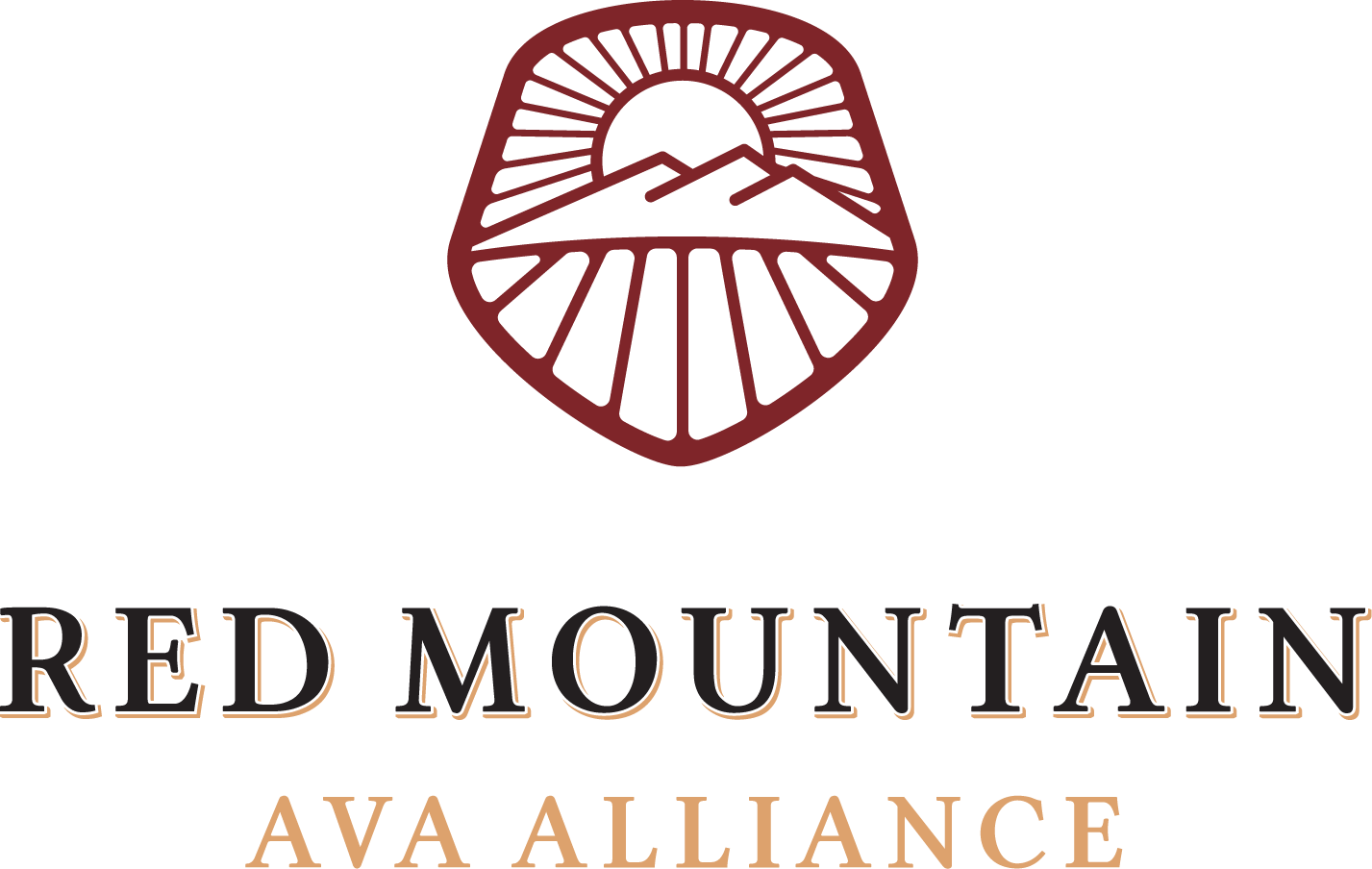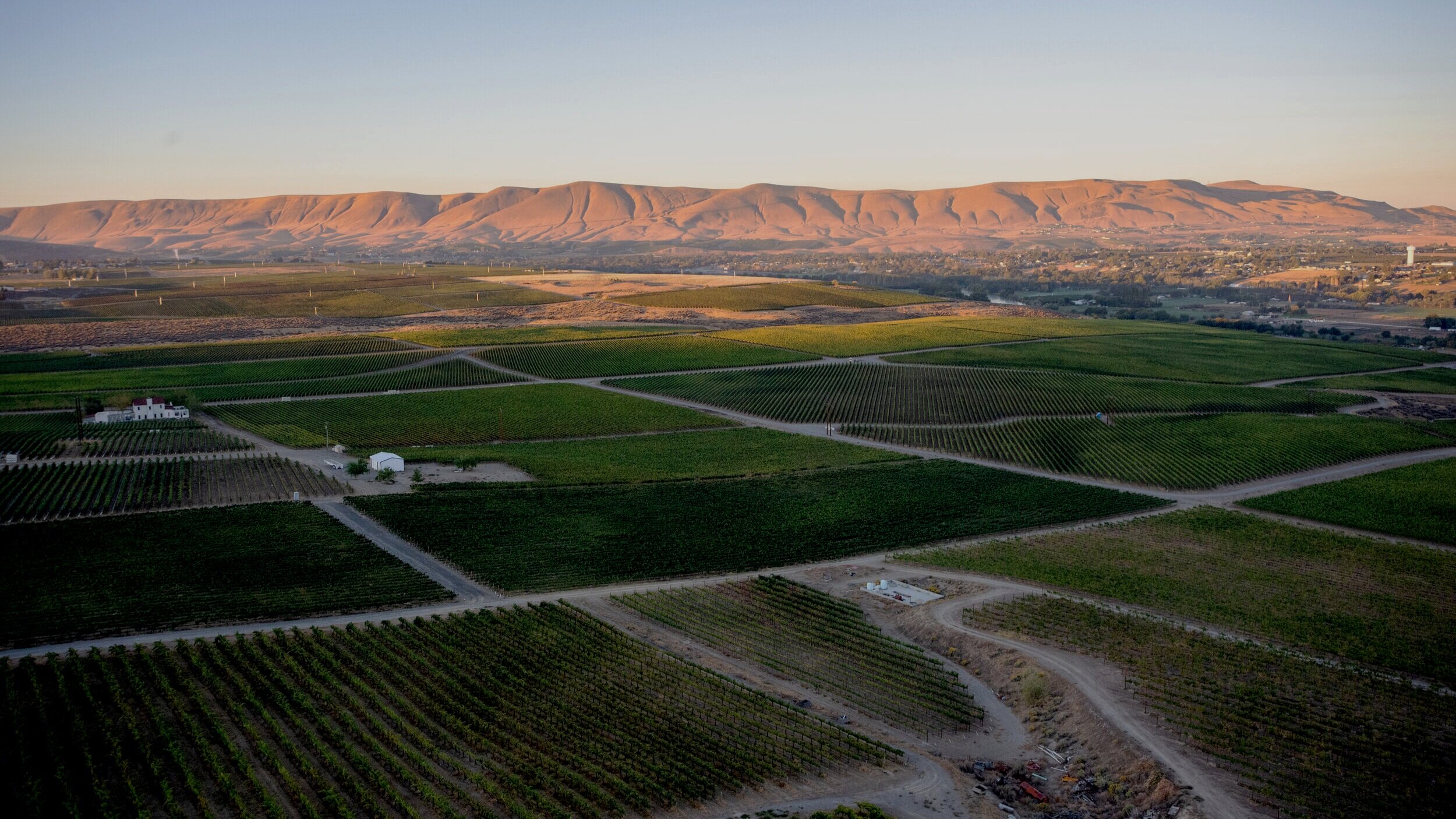The History of the AVA
Red Mountain is relatively new to the fine wine scene.
The first wine pioneers to the region initially walked the land in the summer of 1972. They found a gently sloping sagebrush covered hillside that had been largely overlooked by both local indigenous peoples and local early settlers. There were no roads, wells, powerlines or any other signs of civilization.
These wine pioneers were John Williams and Jim Holmes. They had been greatly influenced by the wine grape research conducted by Dr. Walter Clore and his staff at the WSU agricultural station in Prosser.
Three years later in 1975, after obtaining power, water and rights-of-way to the property, they planted the first ten acres of vineyard on Red Mountain. As wine hobbyists, they had imagined that planting a vineyard might be fun, and maybe even profitable. While they hoped that their efforts may one day produce acceptable wine, they had not envisioned the greatness that was to follow.
The first wines produced were remarkably good, and the reputation of Red Mountain began to grow. Vineyard expansion grew steadily and the pioneers sold their grapes to some of the wineries that are now recognized as some of the best.
The first Red Mountain winery was bonded in 1980. After that time, more people began to purchase land and plant vineyards, recognizing the superior quality of Red Mountain grapes and the potential for world-class wines.
AVA status was achieved in 2001. Red Mountain now hosts approximately fifty-four vineyards covering more than 2300 acres, making Red Mountain one of the most densely planted AVA's with 57% of the AVA currently planted.
The Terroir
Since the dawn of time, natural forces have worked powerfully and mysteriously, and in rare circumstances have aligned to collectively create earthly wonders, such as exquisite gems that are singular in all the world.
One of those gems remained hidden in plain view, waiting patiently for thousands of years until such time certain adventurous, wine loving souls, would have the wisdom and foresight to reveal it to the world. This is the story of Red Mountain’s “terroir”.
The small geographic region that comprises the Red Mountain AVA was formed by the repeated ice-age flooding of Glacial Lake Missoula over 10,000 years ago. The flood waters redesigned the landscape, configuring the soft mountain slopes and depositing nutrient rich top soils over sand, silt and gravel – as if to anticipate the introduction of wine grapes to the region.
Wines made from Red Mountain fruit express a unique terroir with exceptional color, strength and richness, while demonstrating remarkable balance of fruit, acidity, and tannin. This is thanks to five essential factors of Red Mountain’s terroir, which are called The Five Pillars.
THE FIVE PILLARS OF RED MOUNTAIN
soil
Sedimentary soils were deposited here by the Missoula floods. The high alkalinity and calcium carbonate content of the soil, along with its granular consistency, allows for vines to form a well established root system. In soils with this composition, root systems are able to reach deep to obtain the necessary nutrients and moisture. Plus, phylloxera struggles here so many of our vines are ungrafted.
slope
The southwest slope of the Red Mountain AVA provides the vineyards in the region with a directional aspect to the sun that is ideal for prolonged sunlight exposure and warmth. These highly desirable conditions allow for a ripeness in tannins that is recognized as a primary characteristic of Red Mountain fruit.
Precipitation
The Cascade Mountain rain shadow has its greatest effect in Red Mountain, where the desert climate experiences an average annual rainfall of seven inches, and almost no precipitation during the growing season. The result is dramatically lower mold and mildew pressure compared to most vineyard regions.
wind
The prevailing winds come out of the Southwest and are notable for their frequency and velocity. The regular gusts of warm air flow through the AVA’s vineyards during the growing season, keeping the grape clusters small and concentrating the flavors of the fruit - which contributes to their richness and intensity.
In the autumn, the cooler air from the north flows down the slope of the mountain, toward the river. This natural air drainage provides continual air movement which helps prevent frost from settling in the vineyards and damaging the grapes.
temperature
The high latitude (N 46*) and topography contribute temperature swings experienced during the growing season, with daytime temperatures averaging 90 °F (32 °C) and night time temperatures dropping below 50 °F (10 °C).
In the evenings, the AVA experiences a notable drop in temperatures and the Yakima River plays a moderating role for the vineyards. The cooler evenings help to retain acidity levels which allows for the exceptional balance and structure found in Red Mountain grapes, and the wines crafted from them.
Technical Information
Size: 4,040
Estimated plantable acreage: 2,700 acres
Elevation: From 540 feet to 1,400 feet
First planted: 1975
Soils: Predominate soils are Warden, Hezel, and Scooteney
Slope: Classic southwest slope, 0-15%
First agricultural product: Vitis vinifera
Root stock: Own-rooted, small amounts grafted
Irrigation: Mostly drip via deep wells and the Yakima River
Average yield: 3.2 tons per acre
Region: Similar to region IV with approximately 3,200 degree days but with significantly higher total acids than are typically found in a region this warm
Sunlight: 17 hours during the growing season, 2 more hours per day than Napa Valley
Annual rainfall: Five to six inches
Major varietals grown: Cabernet Sauvignon, Merlot, Syrah, Cabernet Franc, Malbec, Petit Verdot
Price per ton: Approximately three times the state average





